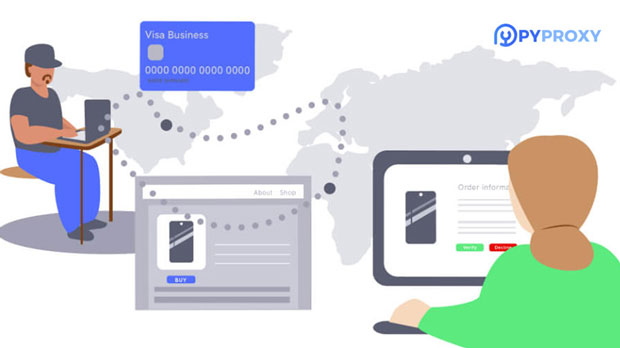When it comes to online activities that require anonymity, security, or access to geo-restricted content, proxies play a crucial role. Among the various types of proxies available, residential proxies and public proxies are two popular options. While both serve similar purposes, they differ significantly in terms of performance, reliability, and use cases. In this article, we will explore the key differences between residential proxies and public proxies, focusing on their performance, benefits, and drawbacks to help you make an informed decision for your specific needs. Understanding Residential ProxiesResidential proxies are IP addresses assigned to real residential devices, such as smartphones, laptops, or desktops, through Internet Service Providers (ISPs). These proxies are associated with physical locations, making them appear as though the user is accessing the internet from a regular household. The main advantage of residential proxies is that they offer a high level of anonymity and are difficult to detect as proxies.Benefits of Residential Proxies1. High Anonymity and Low Detection Rates Since residential proxies use real IP addresses, they are much harder for websites and online services to detect as proxies. This makes them ideal for tasks such as web scraping, data harvesting, and accessing geo-blocked content without triggering CAPTCHAs or being blocked by websites.2. Better Geo-Targeting Residential proxies allow users to choose IP addresses from specific locations, making them perfect for localized testing, market research, or bypassing geo-restrictions on streaming platforms.3. Stability and Reliability Residential proxies are generally more stable and reliable because they are tied to actual devices rather than data centers. This reduces the risk of downtime and IP bans, ensuring smooth operations for tasks that require continuous internet access.Drawbacks of Residential Proxies1. Higher Cost The major downside of residential proxies is their cost. Since they are sourced from real residential IPs, providers typically charge more compared to other proxy types, such as public proxies. This can be a deterrent for businesses or individuals with limited budgets.2. Limited Availability The availability of residential proxies can be limited based on the number of active residential devices in a specific area. This can make it challenging to obtain proxies for certain regions, especially if you need a large volume of proxies for specific tasks.Exploring Public ProxiesPublic proxies, on the other hand, are freely available to anyone who wishes to use them. They are often provided by individuals or organizations who offer their unused bandwidth for public use. These proxies can be accessed without any cost, and they usually operate from shared servers.Benefits of Public Proxies1. Free to Use The most obvious advantage of public proxies is that they are free. This makes them attractive to users who have limited budgets or who are looking for a low-cost option to carry out simple online tasks.2. Wide Availability Public proxies are abundant and can be found easily through various websites or forums. The large number of available proxies means users can access them for a wide range of locations.3. Simplicity Setting up and using public proxies is generally straightforward. Since they don’t require a paid subscription, users can easily find lists of available proxies and start using them right away.Drawbacks of Public Proxies1. Low Anonymity and High Detection Rates Public proxies are easy to detect. Since they are shared by many users, websites can quickly identify them as proxies, often blocking them outright or requiring CAPTCHAs to verify the user’s identity. This makes them less suitable for tasks that require high anonymity.2. Unreliable Performance Since public proxies are used by multiple individuals, they tend to be slow and unreliable. Heavy traffic can cause delays, timeouts, or connection failures, which can disrupt important tasks like web scraping or automated browsing.3. Security Risks Public proxies can be dangerous because they may not have strong security measures in place. Hackers or malicious users can intercept your data or inject harmful content, leading to potential security vulnerabilities.Comparing the Performance of Residential and Public ProxiesNow, let's dive into a more detailed performance comparison between residential proxies and public proxies, considering key factors like speed, reliability, security, and anonymity.1. Speed and Latency Residential proxies tend to offer faster speeds with lower latency compared to public proxies. This is because residential proxies use real devices with stable internet connections. On the other hand, public proxies often suffer from slow speeds and high latency due to overcrowding and shared usage.2. Reliability In terms of reliability, residential proxies outperform public proxies. Since residential proxies are tied to actual devices, they are less likely to experience downtime or connectivity issues. Public proxies, however, are prone to frequent disconnections or IP bans due to the high number of users accessing the same server.3. Security and Privacy Residential proxies provide enhanced security and privacy since they are less likely to be flagged by websites and are more difficult to trace back to the user. Public proxies, by contrast, pose a significant security risk, as they can expose users to data breaches, malicious attacks, or identity theft.Which Proxy Should You Choose?The choice between residential proxies and public proxies depends on your specific needs:- If you're working on tasks that require high security, anonymity, or geo-targeting, such as web scraping, accessing restricted content, or running automated bots, residential proxies are the better option due to their high reliability, low detection rates, and fast speeds.- On the other hand, if you only need a proxy for simple, low-risk activities like casual browsing or testing, and you have a limited budget, public proxies may suffice. However, be prepared for slower speeds and the potential need to frequently change IPs due to bans or blocks.In conclusion, residential proxies offer superior performance, better security, and higher reliability compared to public proxies. While they come at a higher cost, they are well worth the investment for businesses or individuals who need consistent and secure proxy performance. Public proxies, while free, come with significant drawbacks such as low speed, high detection rates, and security concerns. Understanding your specific needs will help you choose the best proxy type for your tasks, ensuring that you can maximize your online activities with minimal disruption.
Oct 11, 2025



































































